Pink fungus disease on coffee plants causes serious damage, withering leaves and fruits, reducing productivity. Learn how to effectively prevent and protect coffee trees.
Pink Fungal Disease on Coffee Plants
Pink disease on coffee plants poses a severe threat to the coffee-growing industry, significantly affecting yield and bean quality. To protect coffee crops from the attacks of pink disease, understanding its causes, conditions for development, and effective control measures is essential. In this article, Sataka provides detailed insights on how to identify, prevent, and treat pink disease in coffee plants.
1. What is Pink Disease on Coffee Plants?
Pink disease is a serious fungal infection that harms coffee plants, directly impacting yield and bean quality. It is caused by fungi of the genus Ravenelia, which can hinder the growth of coffee plants and damage coffee fruits.
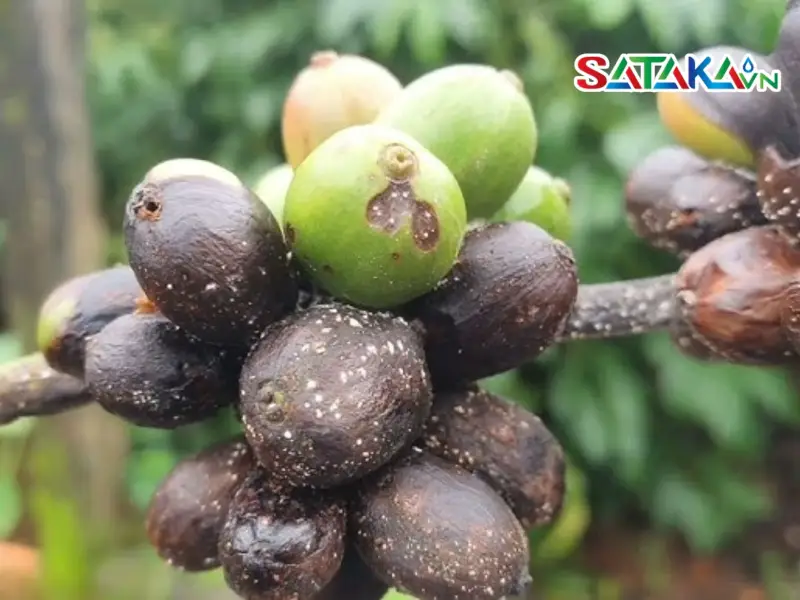
Pink fungus disease on coffee trees
The fungus usually enters coffee plants through small wounds on leaves or fruits. Once inside, Ravenelia fungi grow and form fungal threads, producing the characteristic pink fungal patches on plant parts. Pink disease thrives in wet and cool conditions, making it prevalent during rainy seasons or in high-humidity areas.
2. Causes of Pink Disease in Coffee Plants
The primary cause of pink disease in coffee plants is the fungus Corticium salmonicolor. This fungus develops vigorously in temperatures ranging from 28–30°C and in atmospheric humidity above 85%. During the rainy season or in hot and humid climates, the fungus spreads through rainwater, wind, and insects, increasing the risk of infection in coffee plants.
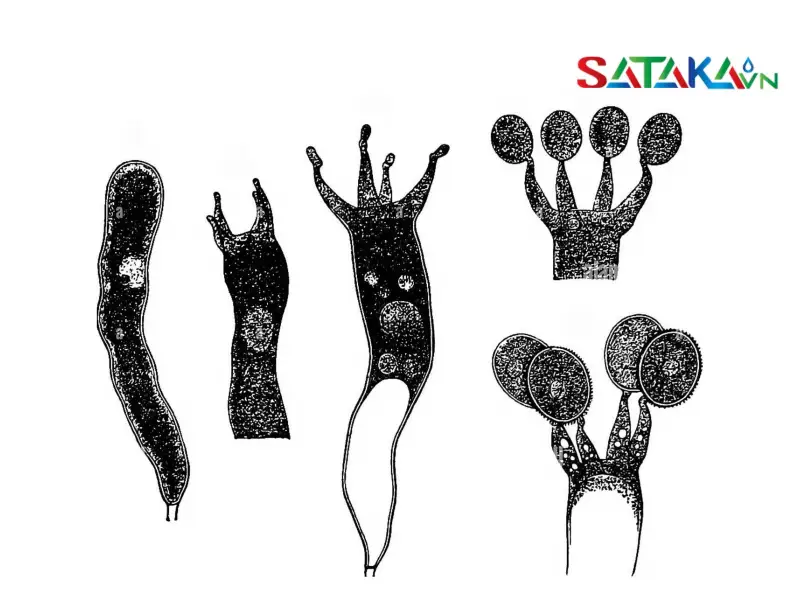
Corticium salmonicolor causes pink fungus disease in coffee
Coffee plants are most vulnerable to infection between June and October, especially in September. After this period, as the weather changes, the disease subsides.
Besides weather factors, planting density significantly affects disease development. Dense coffee plantations with excessive shade create a moist environment that fosters fungal growth and rapid spread. Proper density management and improving orchard ventilation are crucial for effective pink disease control.
3. Symptoms of Pink Disease in Coffee Plants
Pink disease exhibits distinct and recognizable symptoms as Corticium salmonicolor develops:
- Wilting and Spore Coating: The initial sign of the disease is the wilting of coffee fruit clusters and branches. The surface becomes coated with a pink, powdery fungal layer that adheres to leaves and fruits.
- Effects on Branches and Fruits: The disease primarily attacks weak, young branches with low resistance. If left untreated, the fungus can spread to healthier, more robust branches.
- Pink Dust Patches: Initially, the disease produces small, hard-to-detect spots on leaves. These spots later expand, covering the entire leaf with larger pink patches.
- Development Sites: The fungus thrives in areas prone to water retention, such as fruit crevices, clusters, leaf nodes, and lower branches.
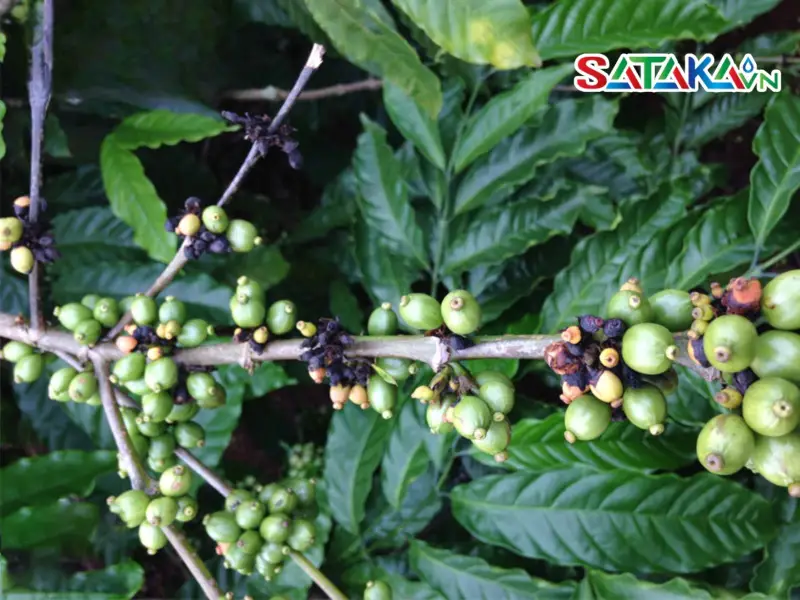
Symptoms of coffee plants suffering from pink fungus disease
4. How Pink Disease Damages Coffee Plants
Pink disease inflicts significant damage, affecting the health and productivity of coffee plants:
- Reduced Yield: Pink fungal spores adhere to leaves, stems, and fruit clusters, developing hyphae that deplete the plant's nutrients. This prevents the plant from absorbing water and fertilizers, leading to wilting, yellowing, and reduced productivity. During the critical growth period from June to September, when coffee plants are fruiting, the disease can significantly lower the quantity and quality of the fruit.
- Weakened Plants: Pink disease reduces the plant's photosynthetic capacity and can cause branch dieback. It destroys the nutrient transport system, weakening the plant and hindering its growth and development.
- Decreased Coffee Quality: Infected coffee beans are often small, underdeveloped, and of poor quality, reducing their economic value and negatively impacting harvest and profitability.
- Rapid Spread: Pink disease spreads quickly from leaves and fruit clusters to stems and branches, and from one plant to another. If uncontrolled, it can develop into an outbreak under favorable conditions such as temperature, humidity, water, wind, and air circulation.
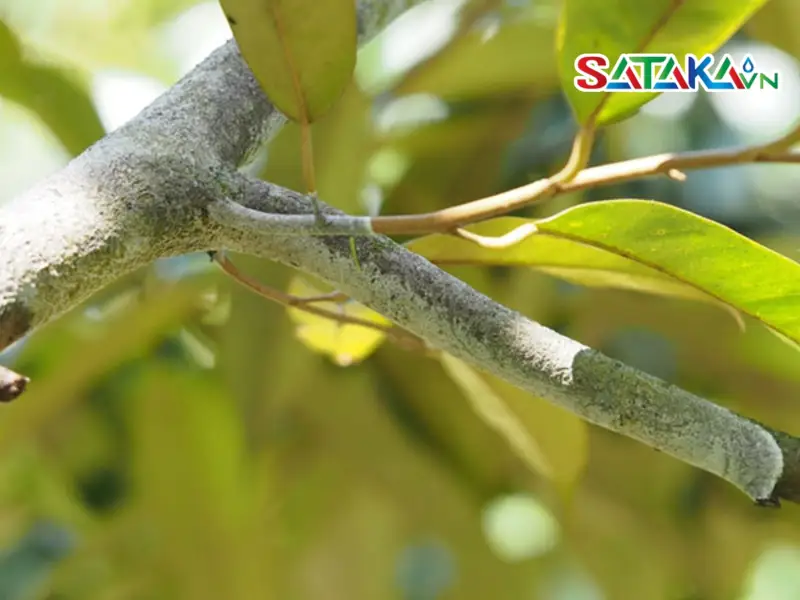
Coffee trees are infected with pink fungus, which affects productivity
5. Measures to Prevent and Control Pink Disease in Coffee Plants
5.1. Cultivation Practices
-
Planting Density: Maintain appropriate planting densities to reduce disease risk:
- For wide-canopy varieties (T4, TR9, TRS1): Space trees 3–3.5m apart.
- For medium-canopy varieties (dwarf coffee, climbing coffee): Space trees 2.8m apart.
- Pruning: Prune shade trees at least twice a year to prevent water retention on coffee tree canopies. After harvest and before fertilization, trim branches to enhance ventilation.
- Balanced Fertilization: Use both organic and inorganic fertilizers in a balanced manner. Organic fertilizers should contain Trichoderma strains to counteract fungal spores.
- Varietal Improvement: Replace or graft coffee plants with strong, disease-resistant varieties to improve yield and reduce susceptibility to pink disease.
- Regular Monitoring: Frequently inspect coffee orchards for early signs of disease and take immediate corrective measures.
5.2. Chemical Methods
- Fungicides: Apply fungicides containing active ingredients like Hexaconazole, Validamycin, Albendazole, or copper/silver ions. For outbreaks, spray 2–3 times at 7–10 day intervals to eliminate the fungus. For prevention, spray at least twice before the disease typically appears.
5.3. Other Methods
- Special Fertilizers: Use fertilizers with disease-controlling properties to enhance resistance.
- Remove Infected Branches: Cut and dispose of heavily infected branches to limit disease spread.
- Drainage: Establish effective drainage systems to reduce humidity during the rainy season, creating unfavorable conditions for fungal growth.
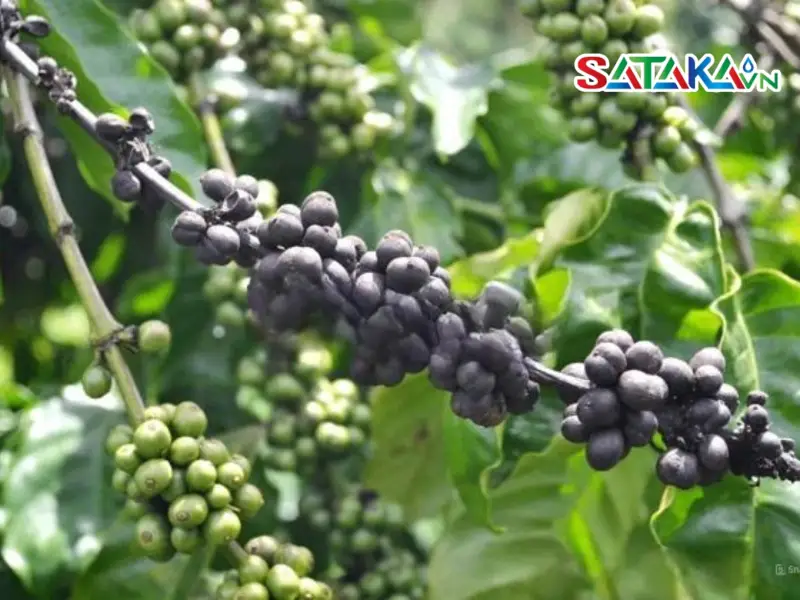
Measures to eliminate pink fungus disease in coffee trees
To effectively prevent and treat pink disease in coffee plants, combining cultivation practices and chemical methods is crucial. The use of specialized fungicides also plays a significant role. At Sataka, we provide high-quality chemicals and disease-control solutions to protect your coffee plants from the risks posed by pink disease. Contact us for advice and the best solutions to maintain the productivity and quality of your coffee orchards. Let us support you in achieving the best outcomes for your crops!a




